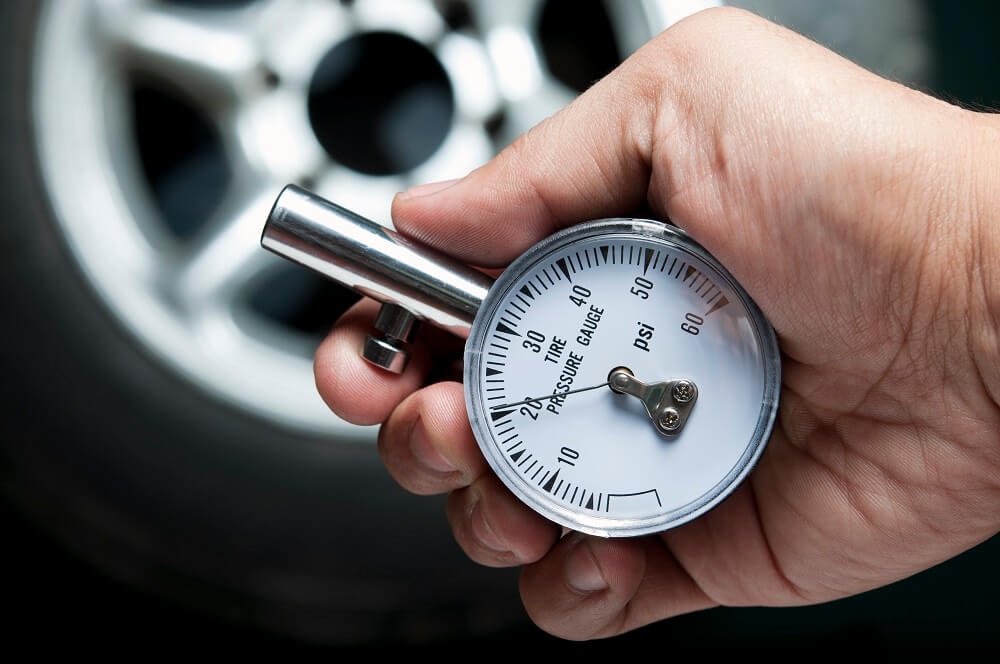You depend on your vehicle’s tires to get you to and from your destination. They are the parts that keep you stable, steady and moving out on the road so it makes sense that you should check on them regularly. To do so, all you need is a tire gauge, an air pump and these five steps:
- Invest in an accurate tire gauge and store it in a place where you can always find it. Your glove box or front console is a great place – ideally you should keep it in your car so you have access to it on the road. You might want to opt for a digital gauge as it’s both reliable and easy-to-use.
- Look in your owner’s manual or at the sticker on the driver’s side door jamb to see what the proper tire pressure is for your vehicle. Don’t go by the number printed on the sidewall of your tires – that’s the maximum tire pressure, not the recommended tire pressure.
- Know where the closest air pump is. Most gas stations have a pump and you can also purchase your own portable air compressor. The best time to fill your tire is when your tires are cold and they haven’t been in use for at least three hours or they haven’t been driven for more than two kilometres. Your tires expand when they are warm so you won’t get an accurate reading.
- Now that you’re ready to get a reading, remove the small cap on your tire’s air valve and press the tire gauge onto the air valve. If the reading is lower than your vehicle’s recommended tire pressure, then use the air pump to add more air to your tire. Check that both the air pump valve and the tire valves are free of dirt. If the number is higher than the recommended tire pressure, you’ll have to let air out. Use a hard object, like a car key, to push the pin on the tire’s air valve. Your tire may also have a pin to release the air pressure. Don’t use your finger to do this and be sure to keep your face at a safe distance.
- Use the tire gauge to check that you now have the right pressure. If you’re happy with the reading, repeat the same process with the rest of your tires. Don’t forget to check your spare. This is also a good time to give your tires a good inspection – look for any uneven tread wear, cuts, cracks, bulges or foreign objects.
Watch for signs of wear:
If you notice certain patterns on your tire vehicles, this can be an indication of a specific problem. Keep an eye out for the following:
- Tire is worn off on both edges: underinflation
- Tire is worn in the centre: overinflation
- Tire has cups or dips in the tread: worn parts
- Tire has sawtooth edges: misalignment
It only takes a few minutes a month, but regularly checking your tires is well worth the effort. Doing so could save you from having to deal with a flat tire or an unexpected blowout.




